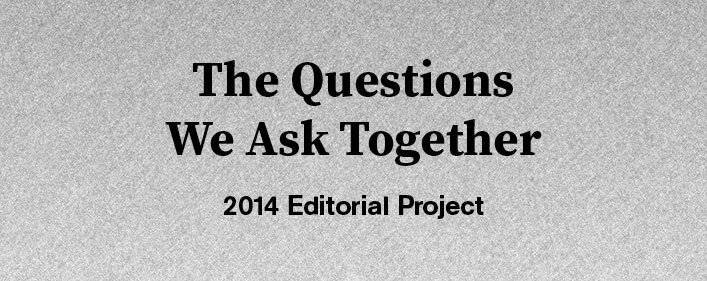(Why) are we imposing our practices onto/into communities instead of supporting existing efforts?
“These are not intended for you to answer the question necessarily, but possibly to address why it is being asked? Why it matters or doesn’t matter? These blog posts will provide an important venue before the conference to deepen our shared exploration of the ideas and questions that socially engaged art provokes.” [1]
I believe in meeting people where they are at any given moment. I believe in visibility. I believe in reflecting a person, group, or community’s power back to them. For a moment, I want to think about the difference between imposition and support through the lens of a social design group that I work with: the Think Tank that has yet to be named. The members of the Think Tank, Meredith Warner, Jeremy Beaudry, and myself, use direct action and participatory design methods to explore contemporary sociopolitical issues in the places where we encounter them, whether physical sites, institutional structures, or social systems.
Last summer, Meredith and Jeremy and I were invited by California-based artist Jacob Wick to participate in the Hidden City Philadelphia festival that was taking place in the neighborhood Meredith and Jeremy call home. Jacob had been commissioned to open the abandoned Germantown Town Hall as a civic space that locals could use for community meetings, convened conversations on the power of civic space, performances, art exhibitions, etc. Jacob brought us in because of our intimate understanding of the neighborhood and our ability (both geographically and due to our track record of community engaged work) to do on-the-ground organizing in advance of the festival. The neighborhood has a plethora of groups working to make the area more livable, but they push up against complex systems, a lack of resources, and a pervasive (and not unjustified) feeling of invisibility. In so many of our urban communities this feeling of invisibility affects the ability of people to recognize their own assets, much less strategically coordinate the sharing of these assets. We intended, and I think were successful, in creating a space where the community could support each other, be an audience and a participant, and build capacity through conversation. In creating a forum for people to share their knowledge, we want to create the possibility for the community to see itself and its power. We’re still trying to do this, in every project, every day. As artists, we had license and support (based obviously in class/race privilege) that these community members were never afforded. An unfortunate reality, but by having a well-regarded organization like Hidden City and a non-local artist like Jacob provided us access that we could not have expected otherwise. Imposition and support.
Spawning from a question that it so directed at us, the artist/designer, I ask instead: In this moment where temporary public art is ever-expanding, why don’t cities/institutions/governments support local community organizing efforts the way they support these socially-engaged art projects? Why do artists and cultural institutions have access that it would take community organizers months or years to develop? And what does it look like for us to support local efforts without owning, directing, or overcrowding them?
[1] Delos Reyes, J. and Turnbull, G. (2014). Open Engagement 2014 Blog Project, email invite.
Images:
1. Exterior of Germantown City Hall prior to our occupation. Courtesy of Meredith Warner and Jeremy Beaudry.
2. Conversation in the Germantown City Hall rotunda, June 2013. Courtesy of Meredith Warner and Jeremy Beaudry.
3. Meredith Warner leading a conversation on community resources and support in one of Germantown City Hall. Courtesy of Jeremy Beaudry.
4. Visitors adding to the community asset map of Germantown. Courtesy of Meredith Warner and Jeremy Beaudry.
About the contributor: Katie Hargrave is interested in a poetic and quiet activism that can exist within the history and politics of life in the United States. She creates physical and metaphorical platforms in her installations—from newspapers to dinner tables to stages for participation. Her process begins with a story, a site, or a question; develops with visits to local libraries, county fairs, and historical sites; and is complicated by interviewing locals and questioning so-called experts. The outcome of her research varies in every project, including fiber, performance, printed matter, installation, sound, and video. Regardless of the media she uses, she asks viewers to write their part of the story rather than simply observing. She invites them to become performers having conversations at dinner parties, waving flags, playing games, or planting a tree. katiehargrave.us, jacobwick.info, wearethethinktank.org
